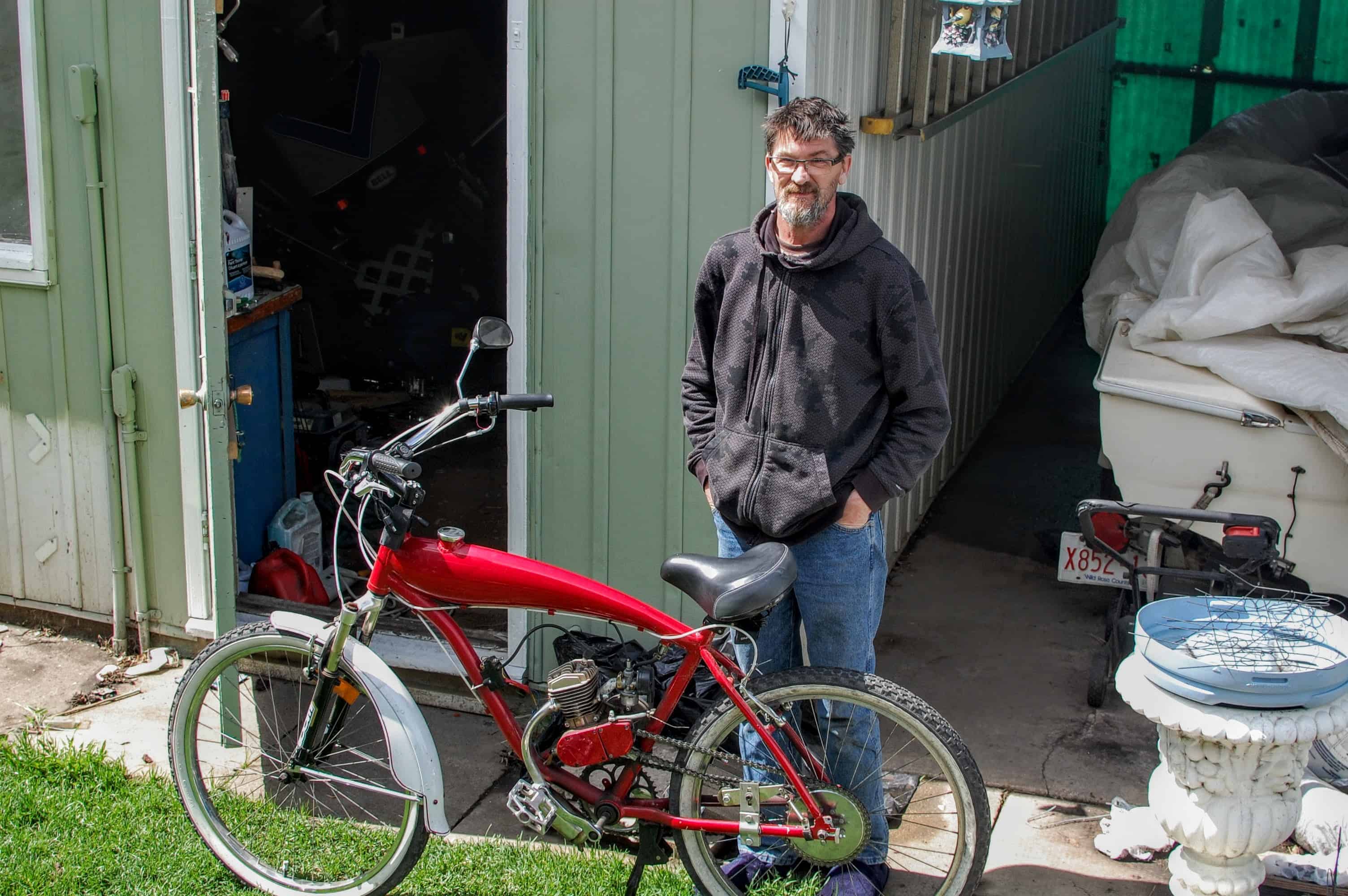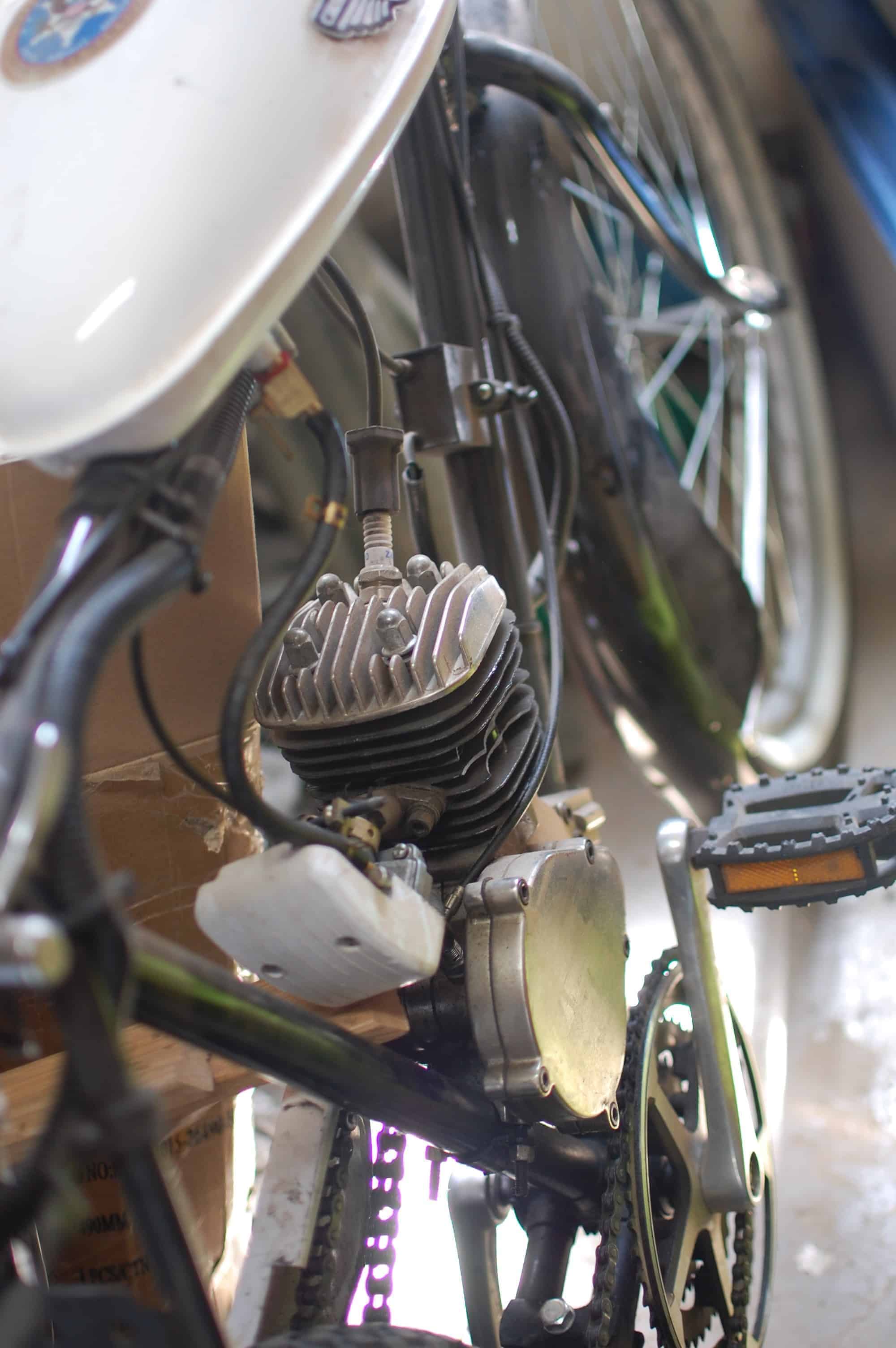Getting your bicycle ready for riding
For many of us, June is when we dust off the saddle and venture out on our bicycles. Whether that’s across town or into the river valley, it pays to do some mechanical checks and preparation first.
Plan to bring a few things with you: water, a snack, and tools like a folding Allen key, an adjustable wrench, a tire patch kit, levers, and a pump. Having these items can make a roadside breakdown a minor inconvenience instead of a terrible end to your day. It’s always wise to bring a bus ticket just in case you can’t fix things on the road and need to get home.
I also asked Bob Duerr what should be checked. Duerr builds motorized bicycles in his shed and is known for doing small repairs for friends and neighbours. His motorized bikes use a 49cc engine and cost around $1,700 to build.

Duerr advised to first check that the tires have air. Read the side of the tire for the recommended pressure. Skinny tired road bikes will range from 70-90 PSI (pound force per square inch) while mountain bikes will be around 30-50 PSI.
“I like going a little low on the pressure. Because of the potholes, that’s a little bit easier on the tubes and on the wheels themselves,” said Duerr.
Next, check the brakes. Ensure that both wheels stop, that the pads aren’t worn through, and that the cables are in good condition and aren’t rusted, frayed, or loose.
“Lubricate the cables without WD-40, because that just makes things worse. You have to pull the cables out of the casing and lubricate them. I use a silicone-based lubricant on all my cables and derailleurs.” He added, “Get good brake pads, don’t buy the cheap ones. There’s different compounds out there for brake pads. I use the brake pads that have kevlar in it.”
The drivetrain requires oil. Again, don’t use WD-40 or other penetrating oil. It isn’t designed for lubricating chains and can damage components.
“For the chain, the best stuff is…Castrol motorcycle chain oil,” he said.

Other mechanics in the area use bicycle-specific oils from Mountain Equipment Co-op. They’re friendlier to the environment, but may lack the lubricating qualities of a motorcycle grade oil.
Also check to ensure your bearings are tight. Grab hold of the wheel and move it sideways to check for play. Do the same thing with the pedals, the handlebars, and the bottom bracket (the big bearing between the pedals). Bearings should move freely in one direction only and shouldn’t wiggle side to side. Repairing a loose bearing isn’t complicated, but it requires specialized tools.
If you need to repair your bicycle, check out Edmonton Bicycle Commuters Society at 9305 111 Avenue. They have all the tools you need to fix your project, no matter how big or complicated. This not-for-profit organization rents repair stands where an experienced mechanic will show you how to fix your bike or help you get fitted to a used bike. They have a wide selection of new and used parts and offer specialized programming for beginners, youth, women, trans, and non-binary persons. For more information, visit www.edmontonbikes.ca.
After everything is ready to go, enjoy your time outside. Duerr has some great advice about where to ride this summer.
“I like riding in the river valley. Lots of good paved trails, but I like taking the nature trails. A lot more fun and more interesting.”
Header image: Checking your bicycle ahead of time ensures a safer ride. | Adam Millie







